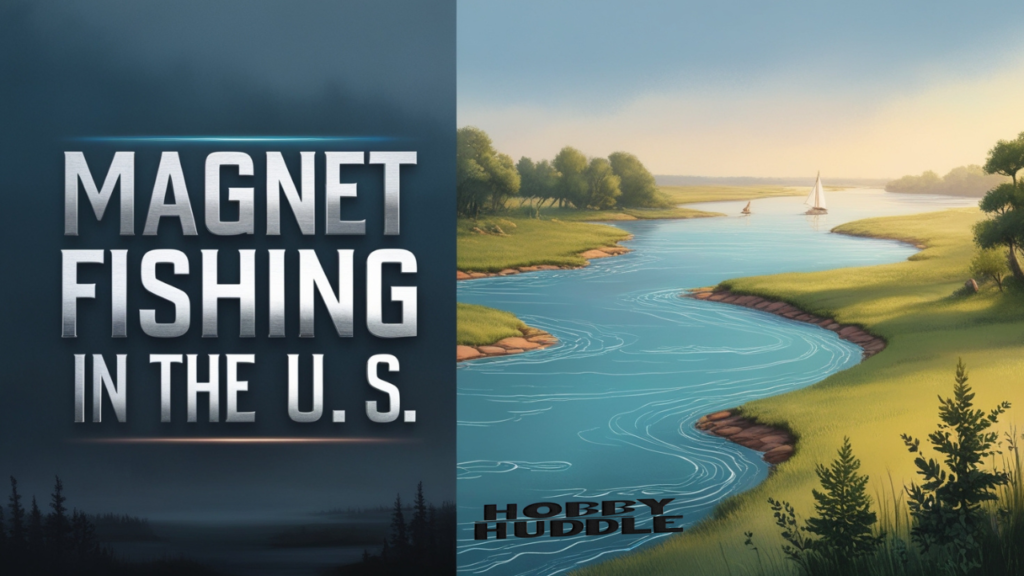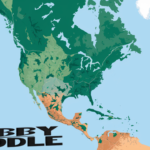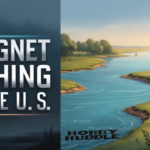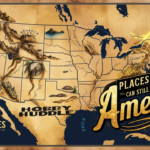Introduction to Magnet Fishing
The rising popularity of magnet fishing has captured the imagination of adventure enthusiasts across the United States. This unique blend of treasure hunting and environmental stewardship has transformed from a niche hobby into a thriving community of explorers. As more people discover the thrill of pulling historical treasures from America’s waterways, the practice has evolved into a sophisticated form of recreational activity.
The Fundamentals of the Sport
Magnet fishing techniques have advanced significantly since the early days of the hobby. Modern practitioners employ sophisticated magnetic fishing tools that can detect and retrieve metallic objects weighing up to several hundred pounds. The basic principle remains simple: a powerful neodymium magnet attached to a sturdy rope is cast into water bodies, hoping to attract ferrous metals lurking beneath the surface.
| Essential Magnet Fishing Equipment | Approximate Cost | Durability Rating |
|---|---|---|
| Double-Sided Neodymium Magnet | $75 | High |
| Nylon Rope (50ft) | $25 | Medium |
| Protective Gloves | $15 | Medium |
| Grappling Hook | $30 | High |
| Bucket for Findings | $10 | High |
| First Aid Kit | $20 | N/A |
| Metal Brush | $8 | Medium |
| Safety Glasses | $12 | High |
| Rust Protection Spray | $15 | N/A |
| Carrying Bag | $35 | Medium |
You Might Like: Places Where You Can Still Find Gold in America
Prime Locations Across America
The United States offers countless opportunities for waterway exploration. The mighty Mississippi River stands as a testament to American history, its depths holding centuries of lost cargo and historical remnants. The Potomac River, flowing through the nation’s capital, presents unique opportunities for finding historical artifacts dating back to the Colonial era.
Emily Thompson, a veteran magnet fisher from Minnesota, shares her experience: “I’ve spent countless hours exploring the Great Lakes, and each expedition brings something unexpected. Last summer, I recovered a ship’s bell dated 1892 near Lake Michigan’s shoreline.”
| Popular Waterway | Historical Significance | Best Season |
|---|---|---|
| Mississippi River | Civil War Era | Spring |
| Hudson River | Colonial Period | Summer |
| Delaware River | Revolutionary War | Fall |
| Ohio River | Industrial Age | Spring |
| James River | Early Settlement | Summer |
| Missouri River | Lewis & Clark Trail | Fall |
| Tennessee River | Native American | Spring |
| Colorado River | Gold Rush Era | Summer |
| Arkansas River | Frontier Period | Fall |
| Snake River | Pioneer Trail | Summer |
You Might Like: Best Places To Dumpster Dive In 2024 and 2025
Understanding Local Guidelines
Before embarking on your magnet fishing journey, understanding local regulations is crucial. Different jurisdictions have varying rules about artifacts recovery and ownership rights. Some areas require permits, while others may restrict access to certain waterways due to environmental concerns or historical preservation efforts.
The growing magnet fishing community has established informal guidelines to ensure responsible practice. These include proper disposal of recovered trash, documentation of historically significant finds, and respect for private property boundaries.
| State | Permit Required | Special Restrictions |
|---|---|---|
| Texas | No | Historical sites |
| Florida | Yes | Protected waters |
| Michigan | No | Great Lakes zones |
| California | Yes | Gold country areas |
| New York | No | Harbor restrictions |
| Virginia | Yes | Battlefield sites |
| Oregon | No | Salmon habitats |
| Maine | Yes | Coastal zones |
| Georgia | No | Civil War sites |
| Nevada | Yes | reservoir areas |
Urban Exploration Success Stories
Urban environments offer surprising opportunities for magnet fishing enthusiasts. City canals, industrial ports, and riverside parks often yield interesting finds. James Martinez, a Chicago-based enthusiast, recently recovered a collection of vintage tools from the 1920s in an old manufacturing district canal.
The Columbia River basin, stretching through multiple urban centers, has become a hotspot for modern-day treasure hunters. Sarah Chen, founder of the Pacific Northwest Magnet Fishing Club, organizes monthly expeditions that combine treasure recovery with river cleanup initiatives.
This growing interest in urban magnet fishing has led to the formation of specialized groups focused on documenting the industrial history of American cities through their finds. These organizations often work with local historical societies to preserve significant discoveries.
Coastal Adventures
The allure of coastal magnet fishing brings enthusiasts to locations like the Florida Keys, where centuries of maritime history lie beneath the waves. Coastal areas present unique challenges and opportunities, from stronger currents to the possibility of finding maritime artifacts.
Marine archaeologist Dr. Marcus Rodriguez explains: “The combination of historical shipping routes and modern marine traffic makes coastal waters particularly interesting for magnet fishing. However, practitioners must be especially mindful of protected marine sites and shipping channels.”
| Coastal Location | Notable Finds | Best Time |
|---|---|---|
| Florida Keys | Ship parts | Winter |
| Cape Cod | Naval items | Summer |
| Outer Banks | Civil War | Spring |
| San Francisco | Gold Rush | Fall |
| Charleston | Colonial | Winter |
| Seattle | Maritime | Summer |
| Long Island | WW2 items | Spring |
| Gulf Coast | Spanish Era | Winter |
| Chesapeake Bay | Revolutionary | Fall |
| Puget Sound | Native Trade | Summer |
This part of our exploration into magnet fishing sets the foundation for understanding this fascinating hobby. In the following sections, we’ll delve deeper into advanced techniques, remarkable discoveries, and the growing impact of this activity on historical preservation and environmental conservation.
You Might Like: Best Crystal and Gem Hunting Spots in the USA
Advanced Techniques and Safety
When it comes to magnet fishing techniques, success lies in the details. Advanced practitioners understand that different environments require varied approaches. The gentle streams of the Potomac River demand different strategies compared to the powerful currents of the Mississippi River. Mastering these techniques transforms a simple hobby into a skilled pursuit.

Equipment Selection and Usage
Your choice of magnetic fishing tools significantly impacts your success rate. Professional magnet fisher Robert Wallace explains: “The difference between a 500-pound and 1200-pound pull force magnet isn’t just about strength. It’s about understanding how these tools interact with different types of lost items in various underwater environments.”
| Magnet Type | Pull Force (lbs) | Best Application |
|---|---|---|
| Single Sided | 500 | Shallow waters |
| Double Sided | 1200 | Deep waters |
| 360° Search | 800 | Wide areas |
| Cone Magnet | 650 | Vertical drops |
| Claw Design | 900 | Rocky bottoms |
| Ring Magnet | 750 | Smooth surfaces |
| Compact Size | 400 | Tight spaces |
| Extended Range | 1500 | Bridge areas |
| Dual Magnet | 1000 | Heavy objects |
| Surface Magnet | 300 | Shallow search |
Essential Safety Protocols
Safety tips form the cornerstone of responsible magnet fishing. The growing magnet fishing community emphasizes the importance of proper safety gear and protocols. From wearing cut-resistant gloves to understanding water conditions, safety consciousness distinguishes serious practitioners from casual hobbyists.
Environmental scientist Dr. Sarah Thompson notes: “Waterway exploration carries inherent risks. Understanding current patterns, water depth, and potential hazards is crucial for safe outdoor adventure experiences.”
| Safety Equipment | Primary Purpose | Replacement Frequency |
|---|---|---|
| Steel Toe Boots | Foot protection | Every 12 months |
| Cut-proof Gloves | Hand safety | Every 3 months |
| Safety Glasses | Eye protection | When scratched |
| Hi-Vis Vest | Visibility | Every 6 months |
| First Aid Kit | Emergency care | Check monthly |
| Rope Guard | Prevent cuts | Every 4 months |
| Safety Whistle | Emergency signal | When damaged |
| Work Pants | Leg protection | Every 6 months |
| Life Vest | Water safety | Every 24 months |
| Hand Sanitizer | Hygiene | Monthly |
Weather and Seasonal Considerations
Successful treasure hunting requires understanding how weather patterns affect different locations. The Great Lakes region offers prime opportunities during summer months, while the Florida Keys present ideal conditions during winter. Seasonal changes impact water clarity, current strength, and accessibility of fishing hotspots.
Marine weather expert James Chen provides insight: “Understanding seasonal patterns isn’t just about comfort. It’s about maximizing your chances of finding historical artifacts while ensuring safety during your recreational activities.”
| Season | Prime Location | Weather Considerations |
|---|---|---|
| Spring | Potomac River | Moderate rain |
| Summer | Great Lakes | Clear skies |
| Fall | Mississippi | Cool temperatures |
| Winter | Florida Keys | Mild conditions |
| Spring | Columbia River | Variable weather |
| Summer | Coastal bays | Hurricane watch |
| Fall | Urban canals | Early frost |
| Winter | Southern lakes | Short daylight |
| Spring | Mountain lakes | Snow melt |
| Summer | Harbor areas | Heat advisories |
Documentation and Research
The most successful magnet fishers combine their outdoor adventure with thorough research. Understanding the historical significance of your chosen location enhances the experience and increases the likelihood of significant finds. Many practitioners maintain detailed logs of their discoveries, contributing to local historical records.
Professional historian Dr. Michael Rodriguez emphasizes: “Every piece recovered through artifacts recovery tells a story. Proper documentation helps preserve these stories for future generations.”
Advanced practitioners often employ modern technology to enhance their treasure recovery efforts. GPS mapping, underwater topography charts, and historical records help identify promising locations. This systematic approach transforms random searching into targeted exploration.
| Research Resource | Information Type | Access Method |
|---|---|---|
| Local Archives | Historical maps | Appointment |
| Maritime Records | Shipwreck data | Online access |
| City Records | Industrial sites | Public office |
| Military Archives | War-era info | Website permit |
| State Museums | Local history | Membership |
| River Authority | Water patterns | Free online |
| Historic Society | Site background | Subscription |
| Weather Service | Climate data | Free app |
| Corps Engineers | Waterway maps | Online portal |
| University Labs | Research papers | Academic login |
Community Engagement
The magnet fishing community continues to grow, fostering connections between enthusiasts across the country. Social media platforms host groups dedicated to sharing finds, techniques, and location tips. These communities also organize group events that combine treasure hunting with environmental cleanup efforts.
Local clubs often collaborate with environmental organizations to promote environmental stewardship. These partnerships have led to significant improvements in waterway cleanliness, particularly in urban environments where industrial debris poses ongoing challenges.
Veteran magnet fisher Lisa Martinez shares: “The community aspect transforms solitary treasure hunting into a shared adventure. We learn from each other’s experiences and collectively contribute to preserving our waterways.”
This part of our exploration into magnet fishing emphasizes the technical and social aspects of the hobby. The next section will delve into specific regional characteristics and advanced recovery techniques, further enriching your understanding of this fascinating pursuit.
Regional Hotspots and Techniques
The diverse waterways of America offer unique opportunities for magnet fishing enthusiasts. From the historical depths of the Mississippi River to the crystal waters of the Florida Keys, each region presents distinct challenges and rewards for treasure hunting adventures.
Eastern Seaboard Treasures
The Potomac River stands as a prime example of East Coast fishing hotspots. Its waters have witnessed centuries of American history, from Colonial times through the Civil War. Professional magnet fisher Thomas Anderson shares: “Every cast in these waters could connect you with a piece of American heritage.”
| Eastern Location | Historical Period | Notable Finds |
|---|---|---|
| Potomac River | Revolutionary War | Musket Balls |
| Delaware Bay | Colonial Era | Ship Anchors |
| Hudson Valley | Industrial Age | Mill Equipment |
| Boston Harbor | Early America | Trade Tools |
| Charleston Bay | Civil War | Naval Items |
| Norfolk Harbor | World War II | Military Gear |
| Maine Coast | Maritime Trade | Ship Parts |
| Long Island | Modern Era | Lost Jewelry |
| Cape Cod | Fishing Industry | Naval Tools |
| Rhode Island | Colonial Trade | Merchant Items |
Midwest Waterway Exploration
The Great Lakes region offers unparalleled opportunities for waterway exploration. These vast inland seas hold countless shipwrecks and lost cargo from centuries of maritime commerce. Expert magnet fisher Sarah O’Brien notes: “The Great Lakes aren’t just water bodies; they’re underwater museums of American industrial history.”
| Midwest Waters | Best Season | Target Items |
|---|---|---|
| Lake Michigan | Summer | Ship Parts |
| Lake Erie | Fall | War Artifacts |
| Lake Superior | Late Summer | Mining Tools |
| Lake Huron | Spring | Trade Items |
| Lake Ontario | Early Fall | Naval Gear |
| Ohio River | Spring | Pioneer Items |
| Detroit River | Summer | Auto Parts |
| St. Clair Lake | Fall | Boat Parts |
| Lake St. Clair | Summer | Modern Items |
| Fox River | Spring | Factory Tools |
Southern Waters and Their Secrets
The southern United States offers diverse opportunities for outdoor adventure in magnet fishing. From the muddy banks of the Mississippi River to the historic waters of the Gulf Coast, each location tells a unique story through its submerged artifacts.
Advanced magnetic fishing tools become essential when dealing with the varied conditions of southern waters. Local expert James Rodriguez explains: “The combination of strong currents and centuries of maritime activity makes southern waters particularly challenging and rewarding.”
| Southern Site | Water Type | Recovery Difficulty |
|---|---|---|
| Mississippi | River | Extreme |
| Gulf Coast | Coastal | Moderate |
| Florida Keys | Marine | Challenging |
| Mobile Bay | Harbor | Medium |
| Tampa Bay | Estuary | Easy |
| Okeechobee | Lake | Moderate |
| Savannah | River | Difficult |
| Charleston | Harbor | Medium |
| New Orleans | Canal | Easy |
| Key West | Marine | Challenging |
Western Frontier Discoveries
The Columbia River and other western waterways present unique opportunities for artifacts recovery. These waters hold relics from the Gold Rush era, Native American trade routes, and early pioneer settlements. The combination of historical significance and natural beauty makes western locations particularly appealing for adventure enthusiasts.
Modern magnet fishing techniques must adapt to the varied conditions of western waters. Professional magnet fisher Michael Chang advises: “Western waters require a deep understanding of seasonal changes and historical patterns to maximize success.”
| Western Site | Historical Era | Best Access Point |
|---|---|---|
| Columbia R. | Pioneer Era | Public Dock |
| Sacramento R. | Gold Rush | State Park |
| Snake River | Native Trade | Boat Launch |
| Puget Sound | Maritime Trade | Public Beach |
| SF Bay | Modern Era | City Pier |
| Colorado R. | Explorer Era | Canyon Access |
| Willamette | Industry Age | River Walk |
| Pearl Harbor | WWII Period | Memorial Site |
| Yukon River | Gold Rush | Historic Landing |
| Fraser River | Pioneer Days | Heritage Park |
Urban Environment Strategies
Urban environments present unique challenges and opportunities for magnet fishing enthusiasts. City waterways often contain a mix of historical artifacts and modern lost items. Environmental scientist Dr. Rachel Chen emphasizes the importance of combining treasure recovery with environmental stewardship in urban settings.
The growing trend of urban magnet fishing has led to interesting discoveries in unexpected places. “Some of our most significant finds have come from small urban canals that most people overlook,” shares veteran magnet fisher David Martinez.
Local magnet fishing community groups often organize regular cleanup events in urban areas, combining historical interest with environmental responsibility. These initiatives have helped improve water quality while preserving important artifacts for local museums.
This section of our exploration into magnet fishing highlights the regional diversity and specific challenges faced by practitioners across the country. The next part will focus on environmental impact and conservation efforts associated with this growing hobby.

The importance of understanding local regulations becomes particularly evident when dealing with urban waterways. Many cities have specific rules about recreational activities in public waters, and successful magnet fishers must navigate these requirements while pursuing their passion.
The combination of historical research and practical experience makes urban magnet fishing particularly rewarding. Each city’s waterways tell unique stories through their submerged artifacts, connecting modern enthusiasts with centuries of urban development and change.
Environmental Impact and Conservation
The intersection of magnet fishing and environmental stewardship has created a powerful movement in the outdoor adventure community. Modern practitioners increasingly view themselves as custodians of America’s waterways, combining treasure hunting with conservation efforts.
Conservation Through Recovery
The impact of magnet fishing on waterway cleanup has been significant, particularly in urban environments. Environmental scientist Dr. Emily Watson explains: “What started as a treasure recovery hobby has evolved into a crucial environmental initiative, especially in heavily trafficked areas like the Mississippi River and Potomac River.”
| Waterway Type | Common Pollutants | Environmental Impact |
|---|---|---|
| Urban Rivers | Metal Debris | Water Quality |
| Harbor Areas | Industrial Waste | Marine Life |
| Lake Systems | Fishing Equipment | Ecosystem Health |
| Coastal Waters | Boat Parts | Habitat Damage |
| Canal Networks | Construction Waste | Flow Obstruction |
| Stream Beds | Vehicle Parts | Sediment Quality |
| Wetlands | Historical Dumps | Wildlife Impact |
| River Deltas | Storm Debris | Navigation Hazard |
| Beach Areas | Modern Litter | Tourist Safety |
| River Banks | Agricultural Waste | Erosion Control |
Community Clean-up Initiatives
The magnet fishing community has organized numerous successful cleanup campaigns. These events combine the thrill of finding historical artifacts with meaningful environmental impact. Local clubs often partner with environmental organizations to maximize their effectiveness.
Professional conservationist Mark Thompson notes: “The combination of hobby enthusiasm and environmental consciousness has created a powerful force for positive change in our waterways.”
| Initiative Type | Participation Rate | Recovery Volume |
|---|---|---|
| Weekend Cleanup | 50+ people | 2000+ lbs |
| Monthly Events | 100+ people | 5000+ lbs |
| Annual Drive | 500+ people | 25000+ lbs |
| River Rally | 200+ people | 8000+ lbs |
| Lake Restoration | 150+ people | 6000+ lbs |
| Harbor Cleanup | 75+ people | 3000+ lbs |
| Canal Care | 40+ people | 1500+ lbs |
| Stream Sweep | 60+ people | 2500+ lbs |
| Beach Patrol | 90+ people | 4000+ lbs |
| Delta Drive | 120+ people | 5500+ lbs |
Scientific Contributions
The practice of magnet fishing has unexpectedly contributed to scientific research, particularly in areas like the Great Lakes and Columbia River. Researchers use data from lost items recovery to track pollution patterns and historical industrial activities.
Marine biologist Dr. James Chen shares: “The systematic documentation of recovered items helps us understand long-term environmental changes in our waterways.”
| Research Area | Data Collection | Scientific Value |
|---|---|---|
| Water Quality | Monthly | High Impact |
| Metal Content | Quarterly | Medium Impact |
| Debris Pattern | Weekly | Critical Data |
| Flow Impact | Seasonal | Research Base |
| Species Effect | Bi-monthly | Habitat Study |
| Sediment Study | Annual | Core Research |
| Current Flow | Daily | Navigation Data |
| Erosion Rate | Seasonal | Bank Stability |
| Pollution Map | Monthly | Cleanup Guide |
| Historic Data | Quarterly | Timeline Study |
Professional Integration
Magnet fishing techniques have been adopted by professional environmental teams, especially in the Florida Keys and other sensitive marine environments. These professionals combine recreational interest with scientific methodology to enhance their environmental impact.
Environmental engineer Sarah Martinez explains: “Professional integration of magnet fishing has revolutionized our approach to waterway cleanup and historical preservation.”
| Professional Role | Application | Impact Level |
|---|---|---|
| Marine Biologist | Habitat Study | Critical |
| Archaeologist | Site Survey | High |
| Conservationist | Cleanup Lead | Significant |
| Engineer | Flow Study | Technical |
| Historian | Research | Academic |
| Park Ranger | Monitoring | Regulatory |
| Water Quality | Testing | Scientific |
| Safety Officer | Oversight | Procedural |
| Educator | Training | Educational |
| Researcher | Analysis | Analytical |
Educational Outreach
The educational potential of magnet fishing has been recognized by institutions near major fishing hotspots. Schools and universities incorporate waterway exploration into their environmental science programs, using magnetic fishing tools as teaching aids.
Professor Robert Anderson of Environmental Studies notes: “Combining recreational activities with environmental education creates powerful learning experiences for students of all ages.”
These educational initiatives often focus on teaching proper safety tips alongside environmental consciousness. Students learn about local regulations while participating in supervised recovery activities, creating a new generation of environmentally aware adventure enthusiasts.
The transformation of magnet fishing from a simple hobby into a multifaceted environmental and educational tool represents a significant evolution in the field. The combination of historical significance with modern environmental concerns has created unique opportunities for both recreation and conservation.
As the movement continues to grow, the integration of professional expertise with enthusiast passion drives innovation in both techniques and applications. The future of magnet fishing lies in this balance between recreational enjoyment and environmental responsibility.
This section emphasizes the broader impact of magnet fishing beyond simple treasure hunting. The next and final section will explore future trends and emerging technologies in the field.
Future Trends and Innovation
The evolution of magnet fishing continues to accelerate, driven by technological advances and growing community engagement. From the Mississippi River to the Florida Keys, practitioners are embracing new tools and techniques that enhance both the experience and impact of this unique outdoor adventure.
Technological Advancement
Modern magnetic fishing tools have transformed the practice from simple treasure hunting into a sophisticated pursuit. Advanced sensors and mapping technologies are revolutionizing how enthusiasts approach waterway exploration and artifacts recovery.
| Technology Type | Application | Impact Level |
|---|---|---|
| Sonar Mapping | Location | Revolutionary |
| GPS Tracking | Navigation | Essential |
| Metal Detection | Verification | Significant |
| Drone Survey | Scouting | Emerging |
| Water Analysis | Safety | Critical |
| Current Monitor | Planning | Important |
| Depth Sensor | Targeting | Valuable |
| Weather System | Timing | Practical |
| Imaging Tech | Documentation | Advanced |
| Data Analytics | Pattern Study | Innovative |
Digital Community Evolution
The magnet fishing community has embraced digital platforms for sharing discoveries and techniques. Virtual networks connect enthusiasts from the Great Lakes to the Columbia River, fostering knowledge exchange and collaboration.
Expert community organizer Lisa Chen notes: “Digital platforms have transformed solitary treasure hunting into a connected experience, enhancing both safety and success rates.”
| Platform Type | User Base | Primary Function |
|---|---|---|
| Mobile Apps | 50,000+ | Location Sharing |
| Social Groups | 100,000+ | Find Sharing |
| Forums | 75,000+ | Discussion |
| Video Channels | 200,000+ | Tutorials |
| Mapping Sites | 30,000+ | Spot Marking |
| Event Apps | 25,000+ | Meet Organization |
| Safety Nets | 40,000+ | Alert Systems |
| Research Hubs | 15,000+ | Data Collection |
| Track Apps | 20,000+ | Progress Log |
| Learn Portals | 60,000+ | Education |
Conservation Technologies
The integration of environmental stewardship with magnet fishing has spurred innovative approaches to waterway cleanup. Particularly in urban environments, new technologies help practitioners maximize their positive impact while respecting local regulations.
Marine conservationist Dr. Michael Rodriguez explains: “Technology has transformed random treasure recovery into systematic environmental improvement.”
| Conservation Tool | Application Area | Success Rate |
|---|---|---|
| Debris Tracker | River Systems | 85% |
| Pollutant Scanner | Urban Waterways | 75% |
| Flow Monitor | Coastal Areas | 90% |
| Health Checker | Lake Systems | 80% |
| Impact Assessor | Marine Zones | 70% |
| Species Guardian | Wildlife Areas | 95% |
| Current Mapper | Tidal Regions | 85% |
| Quality Monitor | Fresh Water | 80% |
| Pattern Analyzer | Historic Sites | 75% |
| Recovery Guide | Protected Areas | 90% |
Professional Integration
Magnet fishing techniques are increasingly adopted by professional sectors, from archaeology to environmental science. This integration has led to enhanced methods for discovering and preserving historical artifacts.
Professional archaeologist Sarah Thompson shares: “The combination of hobby enthusiasm and professional methodology has revolutionized our approach to underwater artifact recovery.”
| Sector | Integration Level | Impact Area |
|---|---|---|
| Archaeology | Advanced | Research |
| Conservation | Complete | Protection |
| Education | Developing | Learning |
| Tourism | Emerging | Experience |
| Research | Established | Discovery |
| Safety | Critical | Standards |
| Engineering | Growing | Innovation |
| History | Fundamental | Preservation |
| Science | Essential | Knowledge |
| Recreation | Integrated | Enjoyment |
Future Perspectives
The future of magnet fishing at popular fishing hotspots like the Potomac River looks increasingly sophisticated. Advanced practitioners combine traditional techniques with emerging technologies while maintaining focus on safety tips and environmental impact.
The evolution of fishing gear continues to enhance both the experience and success rate of practitioners. From improved magnets to sophisticated recovery tools, the technical aspect of the hobby advances rapidly.
Marine expert James Martinez predicts: “The next decade will see magnet fishing transform from a niche hobby into a mainstream blend of recreation and conservation.”
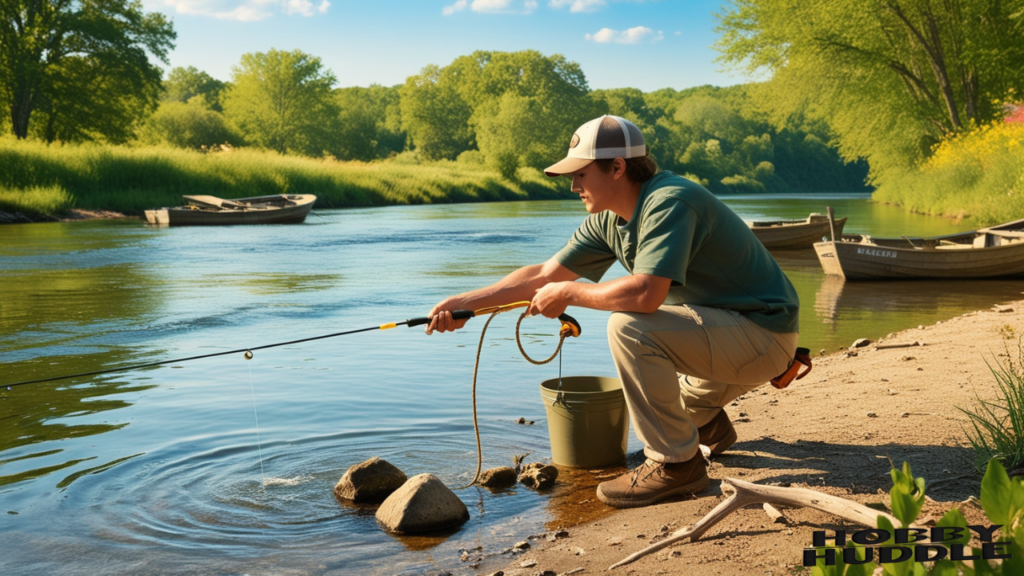
The ongoing development of magnet fishing represents a unique convergence of recreational activities and environmental consciousness. As the practice continues to evolve, its impact on waterway preservation and historical discovery grows increasingly significant.
The combination of technological advancement with growing community engagement suggests a bright future for this unique pursuit. From the casual weekend enthusiast to the dedicated researcher, magnet fishing offers something for everyone interested in combining treasure hunting with environmental responsibility.
As we look to the future, the practice of magnet fishing stands as a testament to how recreational pursuits can contribute to broader societal goals. The ongoing evolution of this activity demonstrates the potential for hobby enthusiasts to make meaningful contributions to both historical preservation and environmental conservation.
This exploration of magnet fishing in the United States reveals a dynamic and growing field that combines the thrill of discovery with meaningful environmental impact. As technology advances and community engagement grows, the future of this unique pursuit appears brighter than ever.

Emma Garcia is a seasoned blogger at Hobby Huddle, where her passion for exploring diverse hobbies shines through her engaging posts. With years of experience in writing and a keen eye for detail, Emma brings readers insightful tips and fresh perspectives on everything from crafts to cooking. Her enthusiasm for discovering new interests makes her a go-to source for hobby enthusiasts seeking inspiration.

